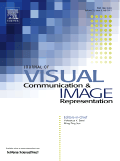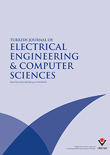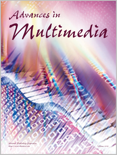
JOURNAL OF VISUAL COMMUNICATION AND IMAGE REPRESENTATION
Scope & Guideline
Connecting Visionaries in Image and Media Technology
Introduction
Aims and Scopes
- Image Processing and Enhancement:
Research in this area includes methodologies for improving the quality and clarity of images through techniques like dehazing, denoising, and enhancement under various conditions such as low-light or underwater environments. - Computer Vision and Object Recognition:
This scope covers algorithms and models for detecting, recognizing, and tracking objects in images and videos, often employing deep learning and attention mechanisms to enhance performance. - Data Hiding and Security:
Papers in this area focus on techniques for embedding data within images (steganography) and ensuring the security and integrity of visual data through reversible data hiding methods. - Multimodal and Multi-Scale Learning:
This encompasses research that integrates information from various modalities (e.g., audio-visual) and scales to improve tasks like recognition, segmentation, and classification. - 3D Modeling and Reconstruction:
Research in this category investigates methods for creating three-dimensional models from two-dimensional images or video sequences, enhancing applications in augmented reality and robotics. - Quality Assessment and Perception:
Focuses on evaluating the quality of images and videos based on perceptual metrics, ensuring that visual content meets specific standards for clarity and detail.
Trending and Emerging
- Deep Learning and Neural Networks:
The application of deep learning techniques for image processing and computer vision tasks has surged, with numerous papers exploring novel architectures and training methodologies. - Low-Light and Underwater Image Enhancement:
Given the increasing need for effective visual systems in challenging environments, research focusing on enhancing images captured in low-light or underwater conditions has gained significant traction. - Action Recognition and Tracking in Videos:
With the rise of surveillance and autonomous systems, there is a growing emphasis on methods for recognizing and tracking human actions in real-time video feeds. - Multimodal Learning and Feature Fusion:
The integration of features from different modalities (e.g., visual and textual) for improved learning outcomes is becoming increasingly popular, reflecting the need for more comprehensive models. - Generative Models for Image Synthesis:
Generative models, especially those utilizing GANs (Generative Adversarial Networks), are trending, with applications ranging from image restoration to creative content generation.
Declining or Waning
- Traditional Image Compression Techniques:
With advancements in deep learning and neural networks, traditional methods of image compression are becoming less relevant. Papers focusing solely on older compression algorithms are less frequently published. - Basic Image Filtering Techniques:
As the field evolves towards more sophisticated machine learning approaches, simpler image filtering techniques are seeing reduced interest, with researchers preferring advanced algorithms that provide better outcomes. - Static Object Detection in Controlled Environments:
Research focusing on static object detection in controlled settings has waned, as the emphasis shifts towards real-world applications that require robust performance in dynamic and unpredictable environments.
Similar Journals

Computational Visual Media
Advancing innovation in visual computation.Computational Visual Media, published by TSINGHUA UNIVERSITY PRESS, is a premier open access journal dedicated to advancing the fields of Artificial Intelligence, Computer Graphics and Computer-Aided Design, and Computer Vision and Pattern Recognition. Since its inception in 2015, it has established a robust position within the academic community, consistently achieving Q1 rankings across its categories as of 2023. With exceptional Scopus rankings, including a remarkable percentile standing in the top 10% globally, the journal serves as a vital resource for researchers, professionals, and students eager to explore cutting-edge methodologies and technologies in computational visual media. The journal’s open access format enhances accessibility, fostering global collaboration and dissemination of knowledge, making it an indispensable platform for those at the forefront of innovation in these dynamic fields. The journal is headquartered in Beijing, China, and aims to publish high-quality research that not only contributes to theoretical advancements but also addresses practical challenges within computational visual technologies.

International Journal of Electronics and Telecommunications
Elevating Academic Dialogue in Cutting-edge TechnologiesWelcome to the International Journal of Electronics and Telecommunications, a prominent publication dedicated to the evolving fields of electronics, telecommunications, and computer networks. Established by the Polska Akademia Nauk (Polish Academy of Sciences), this journal is committed to fostering academic research and technological advancements within these crucial domains. As of 2023, it holds a Q4 ranking in both Computer Networks and Communications and Electrical and Electronic Engineering, showcasing its role as a platform for emerging ideas and groundbreaking studies. With an Open Access model implemented since 2013, it enhances the visibility and accessibility of its articles, encouraging a broader impact and collaboration among researchers, professionals, and students alike. The journal serves as an important resource for those interested in the intersection of technology and communications, and it continues to contribute to the academic dialogue surrounding these vital sectors.

MULTIMEDIA TOOLS AND APPLICATIONS
Transforming ideas into applications in multimedia technology.MULTIMEDIA TOOLS AND APPLICATIONS, published by Springer, is a highly regarded journal in the fields of Computer Networks and Communications, Hardware and Architecture, Media Technology, and Software. Since its inception in 1995, this journal has established itself as a vital platform for disseminating innovative research and developments, maintaining a prominent position evidenced by its Q2 and Q1 rankings across various categories as of 2023. With an ISSN of 1380-7501 and an E-ISSN of 1573-7721, it continues to attract high-quality contributions from scholars and practitioners worldwide. Although it does not currently offer Open Access options, its impact is reflected in impressive Scopus rankings, placing it in the top quartiles in multiple categories, including a remarkable 10th rank in Media Technology. As the field evolves rapidly, the journal’s objectives encompass advancing multimedia technologies and exploring their multifaceted applications, making it an essential resource for researchers, professionals, and students seeking to stay at the forefront of this dynamic discipline. For more information, visit the journal's page to explore recent publications and submission guidelines.

Turkish Journal of Electrical Engineering and Computer Sciences
Innovating Tomorrow's Technology TodayThe Turkish Journal of Electrical Engineering and Computer Sciences, published by the esteemed Tubitak Scientific & Technological Research Council of Turkey, serves as a pivotal platform for disseminating high-quality research in the interdisciplinary fields of electrical engineering and computer science. With an ISSN of 1300-0632 and an E-ISSN of 1303-6203, this journal spans a rich publication history from 1996 to 2024, contributing significantly to its field with a reputable standing in the Scopus rankings. The journal is categorized within the Q3 quartile for both Computer Science and Electrical and Electronic Engineering, reflecting its commitment to scholarly excellence, as evidenced by its rankings—#111 out of 232 in General Computer Science and #420 out of 797 in Electrical and Electronic Engineering. Aimed at researchers, professionals, and students, it encourages contributions that advance knowledge and foster innovation, bridging gaps between theoretical advancements and practical applications. With a strategic focus on open access, it ensures that critical findings are available to a global audience, enhancing the visibility and impact of research efforts originating from Turkey and beyond. This journal is not only a repository of knowledge but also a catalyst for collaborative research in a rapidly evolving technological landscape.

Advances in Multimedia
Transforming Ideas into Multimedia SolutionsAdvances in Multimedia is a dynamic journal published by HINDAWI LTD, dedicated to the ever-evolving field of multimedia research. Since its inception in 2007, this Open Access journal has provided a platform for the dissemination of innovative findings and applications in various aspects of multimedia computing, including image processing, audio-visual technology, and cross-media communication. Although its coverage in Scopus has been discontinued, the journal remains relevant in the academic community, with a focus on fostering new ideas and discussions among researchers and practitioners. With an impact factor reflective of its contributions to the field, Advances in Multimedia plays a crucial role in bridging theoretical and practical applications, enabling scholars and students to engage with cutting-edge topics. This journal serves as a gateway for knowledge, inviting contributions that enhance our understanding of multimedia's impact on both technology and society.

JOURNAL OF MATHEMATICAL IMAGING AND VISION
Elevating Research Standards in Mathematical ImagingJOURNAL OF MATHEMATICAL IMAGING AND VISION, published by Springer, stands as a significant platform for advancing the fields of applied mathematics, computer vision, and pattern recognition, among others. With an ISSN of 0924-9907 and an E-ISSN of 1573-7683, this esteemed journal is based in the Netherlands and has been contributing to the scholarly discourse since its inception in 1992, with a converged focus through 2024. It has achieved reputable standings within several quartiles, including Q2 rankings across applied mathematics, geometry and topology, and condensed matter physics, reflecting its impact and relevance. Notably, the journal ranks within the top 5% in Geometry and Topology and maintains robust standings in Statistics and Probability. The JOURNAL OF MATHEMATICAL IMAGING AND VISION is dedicated to publishing high-quality research that bridges theoretical perspectives with practical applications, making it an essential resource for researchers, professionals, and students who are exploring the cutting-edge of mathematical imaging and its interdisciplinary applications.

JOURNAL OF THE OPTICAL SOCIETY OF AMERICA A-OPTICS IMAGE SCIENCE AND VISION
Elevating Knowledge in Optics and Image ScienceJOURNAL OF THE OPTICAL SOCIETY OF AMERICA A-OPTICS IMAGE SCIENCE AND VISION, published by Optica Publishing Group, is a leading journal in the fields of optics, image science, and vision. With a rich history dating back to 1979, it serves as an essential platform for disseminating cutting-edge research and developments from 1984 to 2024. The journal covers a wide array of topics, including atomic and molecular physics, electronic and optical materials, and pattern recognition in computer vision. Its prestigious categorization in the Q2 quartile for Atomic and Molecular Physics and Optics and its Q3 rankings in Computer Vision and Medical fields indicate the high-level contributions it fosters within the scientific community. Researchers will benefit from its commitment to rigorous peer review and its role in advancing knowledge at the intersection of science and application. Although it is not an open-access journal, the quality of content attainable here is invaluable for academics, industry professionals, and students eager to explore the forefront of optical science.

MULTIMEDIA SYSTEMS
Fostering Insights in Multimedia ApplicationsMULTIMEDIA SYSTEMS, published by SPRINGER, is a premier academic journal dedicated to the dynamic field of multimedia technology and its applications across various domains. With the ISSN 0942-4962 and E-ISSN 1432-1882, this journal has established itself as an essential resource since its inception in 1993, providing researchers and professionals with rigorous peer-reviewed articles that explore innovative developments in Media Technology, Computer Networks, Hardware Architecture, Information Systems, and Software. As a testament to its academic impact, MULTIMEDIA SYSTEMS has attained a Q2 ranking in multiple key categories for 2023, alongside a notable Q1 ranking in Media Technology, highlighting its significance within the community. With a rich repository of knowledge and ongoing commitment to advancing multimedia research, this journal is an invaluable asset for those seeking to stay informed about cutting-edge technologies and methodologies. While the journal follows a traditional subscription model and is not presently open access, it ensures high-quality content that serves the scholarly needs of its audience, facilitated by its accessibility from Germany's respected academic infrastructures. For inquiries and submissions, the journal is based in New York, NY, further illustrating its global academic reach.

Journal of Electrical and Computer Engineering
Transforming Knowledge into Engineering ExcellenceJournal of Electrical and Computer Engineering is a premier open-access journal published by HINDAWI LTD, dedicated to advancing the fields of electrical and computer engineering. With an ISSN of 2090-0147 and an E-ISSN of 2090-0155, this journal has been providing a platform for cutting-edge research since its inception in 2007. Based in the United States, it operates from its address at ADAM HOUSE, 3RD FLR, 1 FITZROY SQ, LONDON W1T 5HF, ENGLAND. The journal has established itself with a healthy impact factor, classified in the 2023 Q2 quartile for both Computer Science (Miscellaneous) and Electrical and Electronic Engineering, demonstrating its growing influence in the academic community. Additionally, its ranking positions it within the 67th percentile in General Computer Science and the 61st percentile in Electrical and Electronic Engineering on Scopus, indicating its significant contribution to these fields. Covering an extensive scope from 2010 to 2024, the journal seeks to publish innovative research articles, reviews, and case studies that explore new techniques and applications in electrical and computer engineering, benefiting a wide audience of researchers, professionals, and students focused on these rapidly-evolving areas.

IMAGING SCIENCE JOURNAL
Advancing the Frontiers of Imaging ScienceImaging Science Journal, published by Taylor & Francis Ltd, serves as a vital resource for researchers and professionals in the fields of computer vision, pattern recognition, and media technology. With an ISSN of 1368-2199 and an E-ISSN of 1743-131X, this journal has been fostering scholarly dialogue since its inception in 1997, with a converged content offering extending through 2024. Its categorization in Quartile 4 in Computer Vision and Pattern Recognition and Quartile 3 in Media Technology highlights its relevance and contributions to emerging trends in these domains. Although it ranks 36th in the Engineering - Media Technology category and 96th in Computer Science - Computer Vision and Pattern Recognition, its innovative research and insights continue to attract the attention of scholars dedicated to advancing knowledge at the intersection of imaging technologies. Offering versatile access options, this journal is essential for students, researchers, and professionals aiming to stay informed and engaged in the rapidly evolving landscape of imaging science.